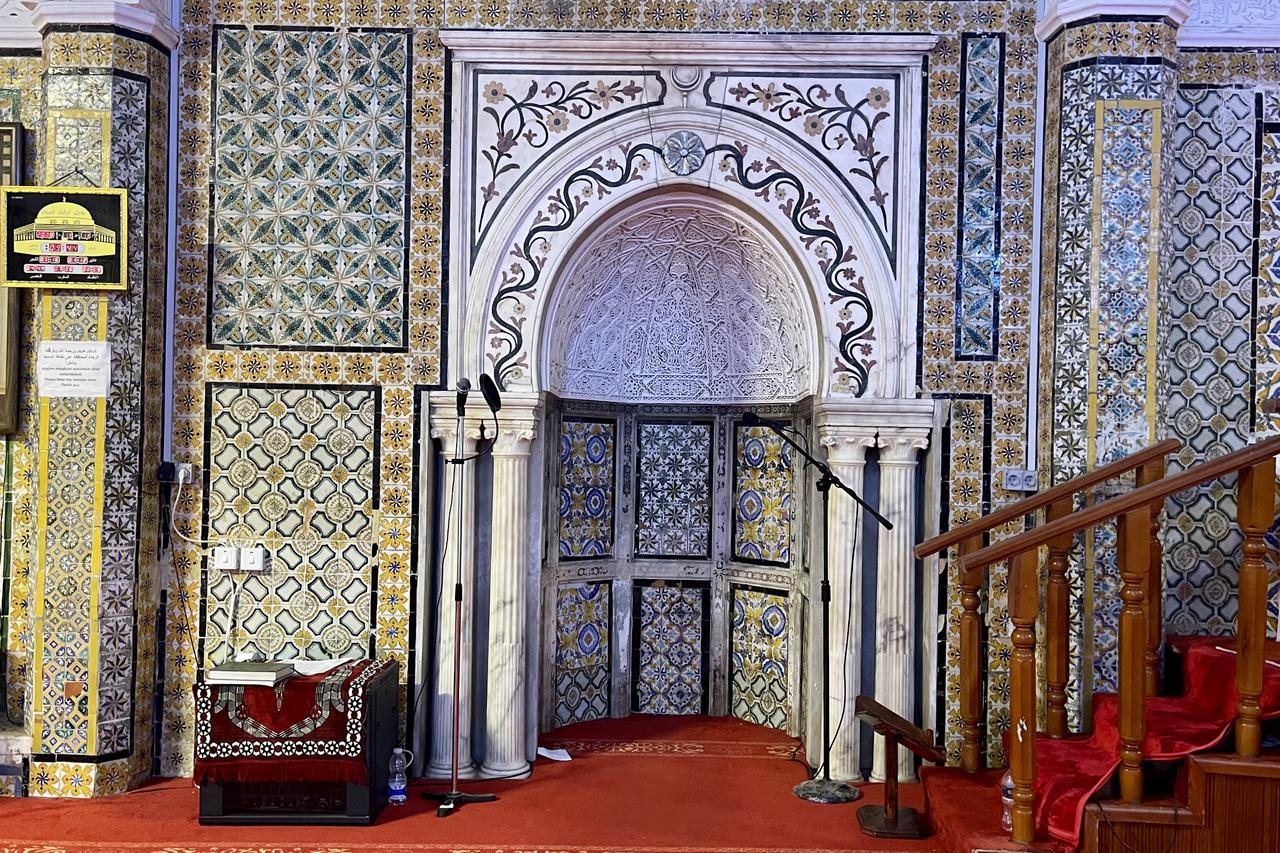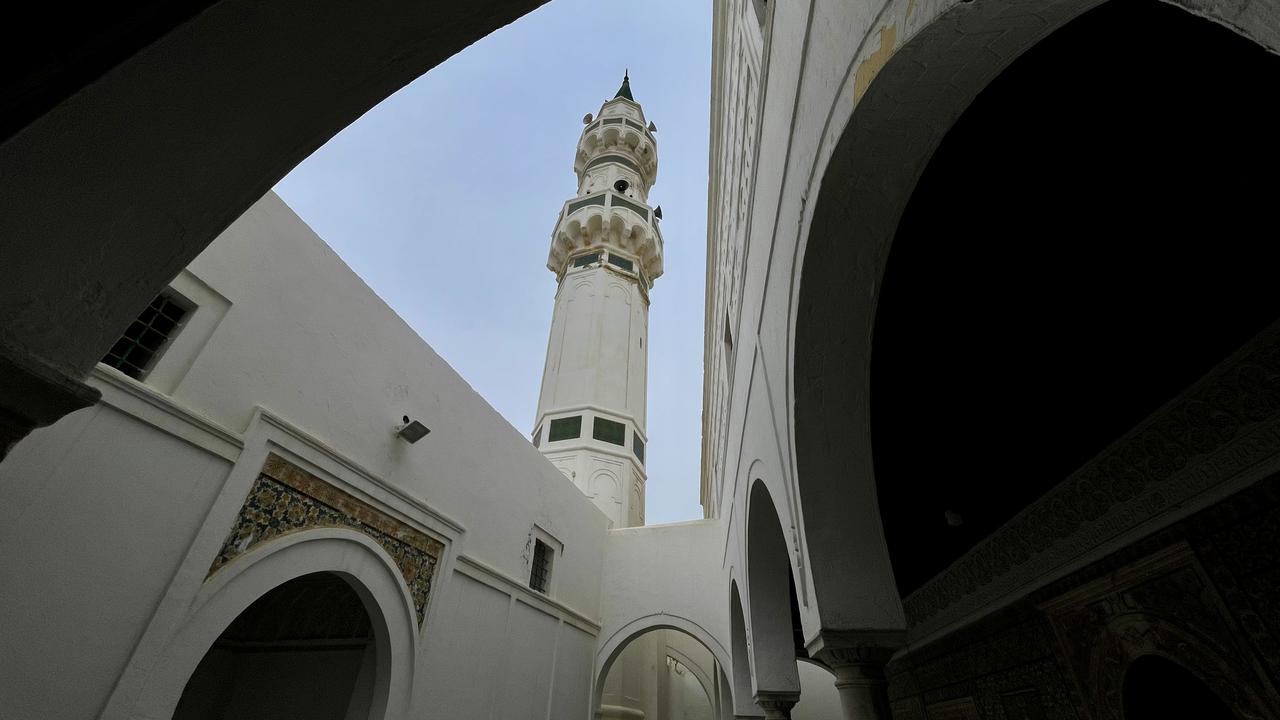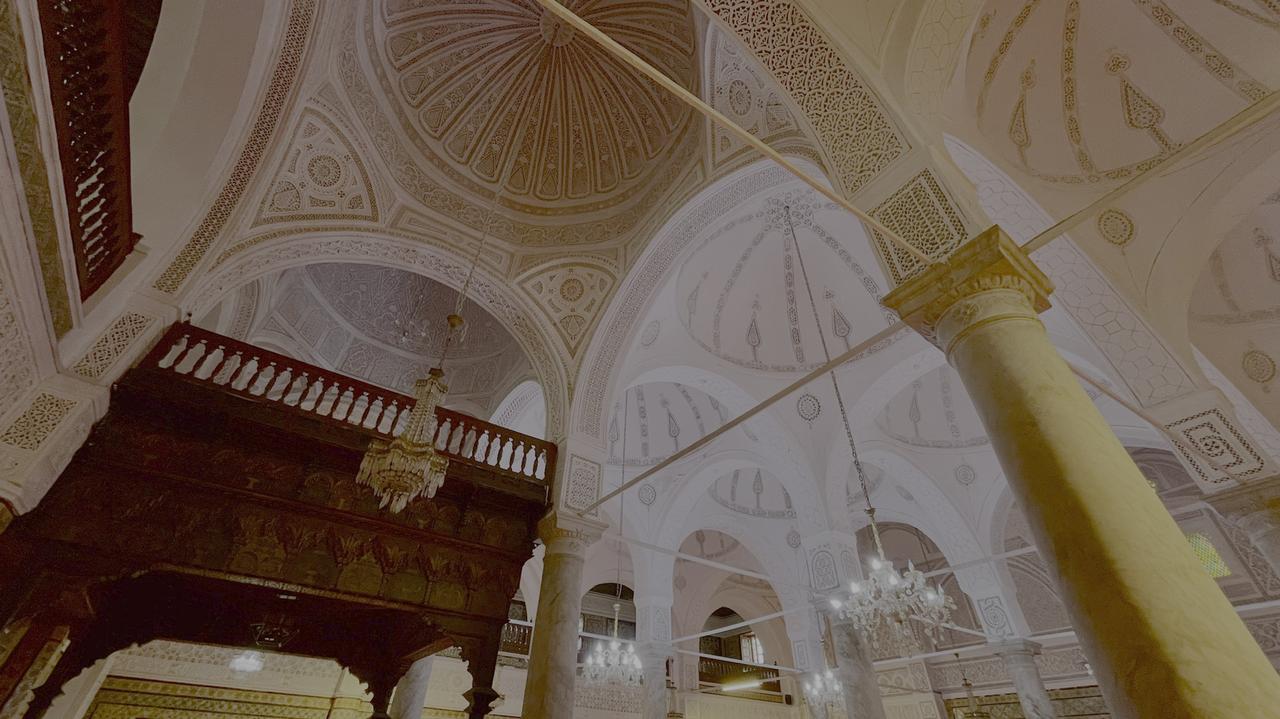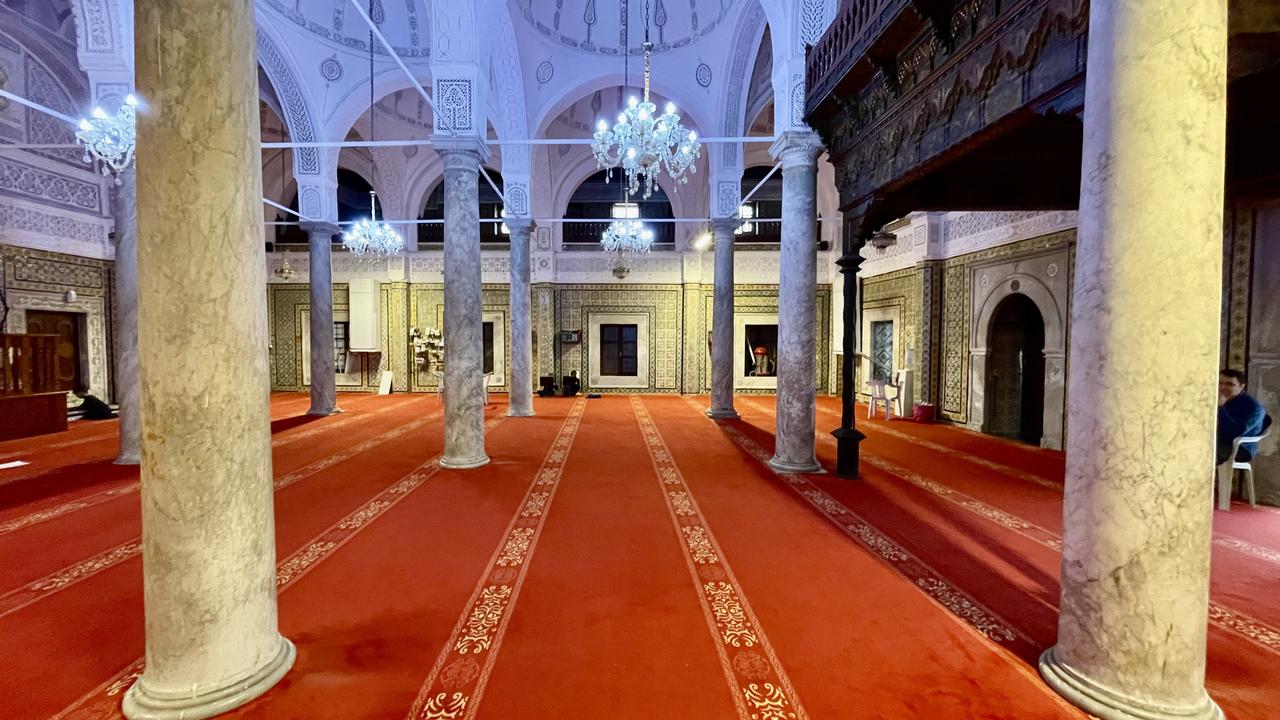
Rising in the heart of Tripoli’s Old City, the Gurgi Mosque has stood for more than two centuries as one of North Africa’s most remarkable Ottoman landmarks.
Built in the first quarter of the 19th century by Georgian Mustafa Bey, son-in-law of Karamanli Yusuf Pasha, the mosque is celebrated for its rich tilework, intricate stucco, and unique blend of Ottoman, Andalusian and Italian influences.

Georgian Mustafa Bey, who arrived in Tripoli with Yusuf Pasha’s entourage and later married his daughter, commissioned the mosque between 1820 and 1834.
Rising near the Old Port and adjacent to the Roman Marcus Aurelius Arch, the mosque reflects both Ottoman authority and local adaptation during the Karamanli era of the Tripoli Province.
“This beautiful mosque is an architectural masterpiece,” said cultural historian Abdulmuttalib Ebu Salim, formerly of the Libyan Ministry of Culture. “The abundance of ornamental detail makes it one of the rarest works in North Africa.”

The Gurgi Mosque is a 16-by-16-meter square structure crowned with 16 domes. Inside, nine marble columns support its arches, while additional spolia columns—likely sourced from older cities—strengthen its outer walls.
The second floor forms a U-shaped gallery, and opposite the richly decorated mihrab lies a section known as the sudde, reserved for distinguished guests.
Tile panels cover both the interior and exterior, while finely carved stucco bands frame the arches.
“Its tile decoration is what sets the mosque apart from other Ottoman mosques in the Maghreb,” Ebu Salim noted.

The mosque’s wooden pulpit was carefully removed in 2014 for conservation and is slated for display at the forthcoming National Museum of Libya.
Mustafa Bey and his family rest in the adjoining mausoleum, completing the picture of a dynastic legacy bound to Tripoli’s Ottoman past.